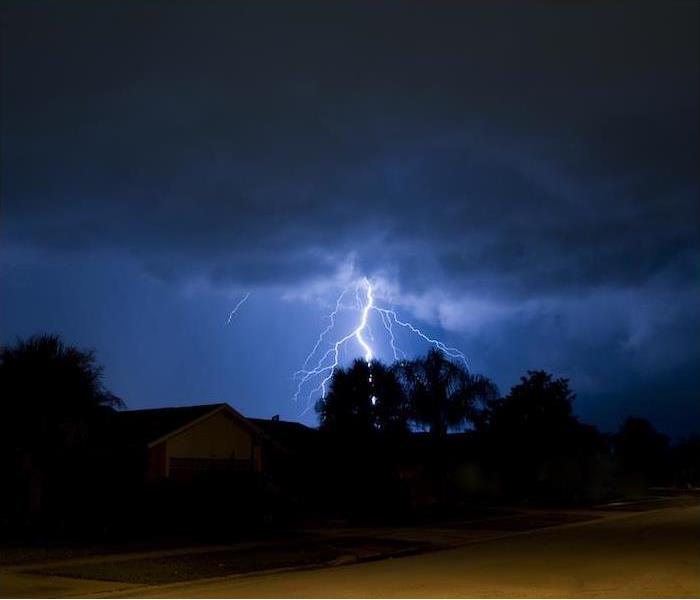Advice for Warm-Weather Thunderstorms | SERVPRO® of East Honolulu
8/12/2020 (Permalink)
 If your home sustains damage due to a storm, you can count on us to help. Contact us at any hour to learn more about our storm restoration process.
If your home sustains damage due to a storm, you can count on us to help. Contact us at any hour to learn more about our storm restoration process.
Because storms need moisture to form, the humidity of summer always gives rise to regular, brief showers. However, these can also turn into more severe thunderstorms rather quickly, which can lead to damage from high winds, lightning and hail.
Since these storms feel routine, they are often ignored, but knowing how to stay safe from a storm anywhere you go can help protect you.
<h3safe-from-summer-storms-anywhere-you-go">Stay Safe From Summer Storms Anywhere You Go
Know your options for shelter. If you are at home and know that a storm is possible for the area, it is best to stay inside and wait it out in case things become severe. However, if a sudden storm catches you out and about, it is also important to know what to do then. Hard-topped cars can be a good shelter, provided you are able to park safely and cut off the engine, as the metal of the car will disburse lightning strikes without doing harm to passengers.
Practice electrical safety. As lightning strikes a building, it routes itself down the path of least resistance in order to reach the balancing charge of the ground—which often means it runs through a home’s electrical wiring system to do so. This can cause a power surge, which is when the charge overwhelms the system and runs through the outlets to anything plugged in. Running everything through your home and office through surge protectors is a great first step, but if you know a storm is coming, you can also unplug everything to be extra safe.
Avoid direct contact with concrete. Did you know that concrete structures have been found to conduct electricity? While concrete itself does not carry a charge, it is often reinforced with metals that can be impacted by a lightning strike and transfer this energy to the surrounding concrete. If a thunderstorm is nearby, avoid touching any concrete walls or floors directly.
Stay indoors for at least 30 minutes. When sudden summer storms interrupt your plans, as soon as the sky clears you will want to get back outside—but since lightning has a 25-mile strike range, going outside prematurely can actually put you in harm’s way. When thunder claps, start a 30-minute timer before heading outdoors, and reset it every time you hear another rumble to be safe.
If your home sustains damage due to a storm, you can count on us to help. Contact us at any hour to learn more about our storm restoration process.






 24/7 Emergency Service
24/7 Emergency Service